Campaigns Performance Max (PMax) Google Ads are a powerful lever for advertisers. ATS expertsThe new Google AdWords? platform enables them to serve ads on a variety of Google platforms: YouTube, Display, Search, Discover, Gmail and Maps. This automation-driven approach simplifies campaign management while leveraging artificial intelligence to maximize results. However, inappropriate management of Performance Max locations can have a negative impact on your performance.
This article explores essential steps for identifying broadcast locationsthe techniques to exclude them effectivelyWe offer an in-depth analysis of which locations to prioritize and which to avoid, depending on your business sector.
Why excluding locations is essential for your Performance Max campaigns
The main aim of Performance Max campaigns is to leverage automation to optimize conversions. However, Google's automated approach can deliver your ads to locations that don't match your target audience or business objectives. A young child is unlikely to be a decision-maker when it comes to attending the Shen Yun show in Toulon.
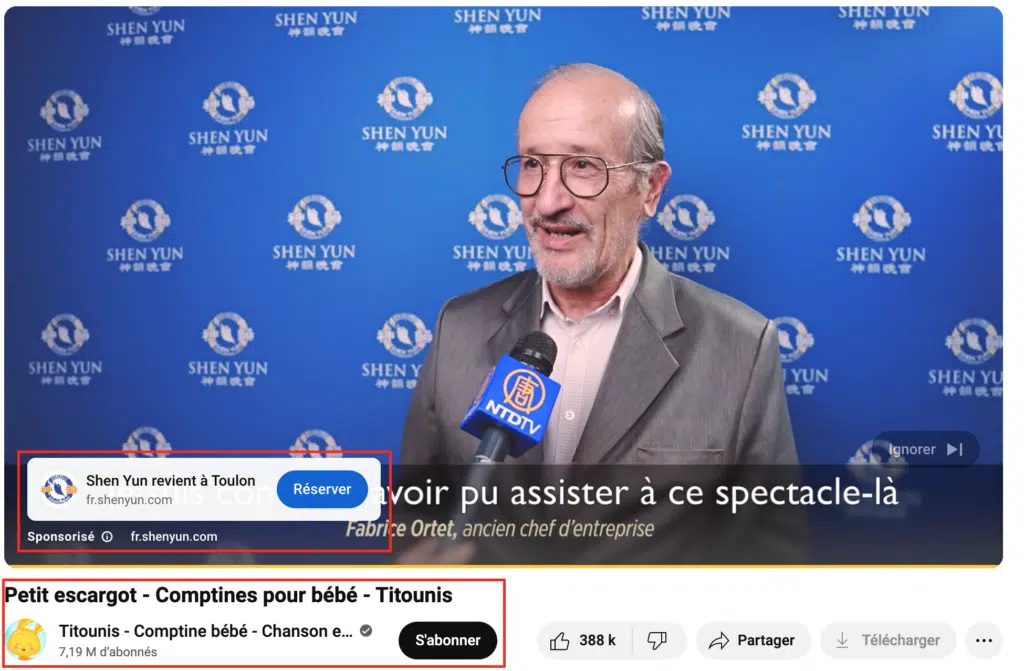
The main risks include :
- Low return on investment (ROI) : Running ads on irrelevant locations can lead to unnecessary clicks and wasted ad spend.
- A negative impact on your brand image Your ads could appear on sites or applications that are inappropriate for your sector, damaging the perception of your brand.
- Uneven performance : Some sites, such as mobile applications, often have lower conversion rates.
Challenges specific to PMax campaigns
Google does not allow direct control of specific locations within Performance Max campaigns. This limitation requires proactive management to identify underperforming locations and exclude them using available tools.
How do you identify broadcast locations in your Performance Max campaigns?
Although Google Ads does not yet offer a standard detailed report on broadcast locations for PMax, you can use report editor to access usable data:
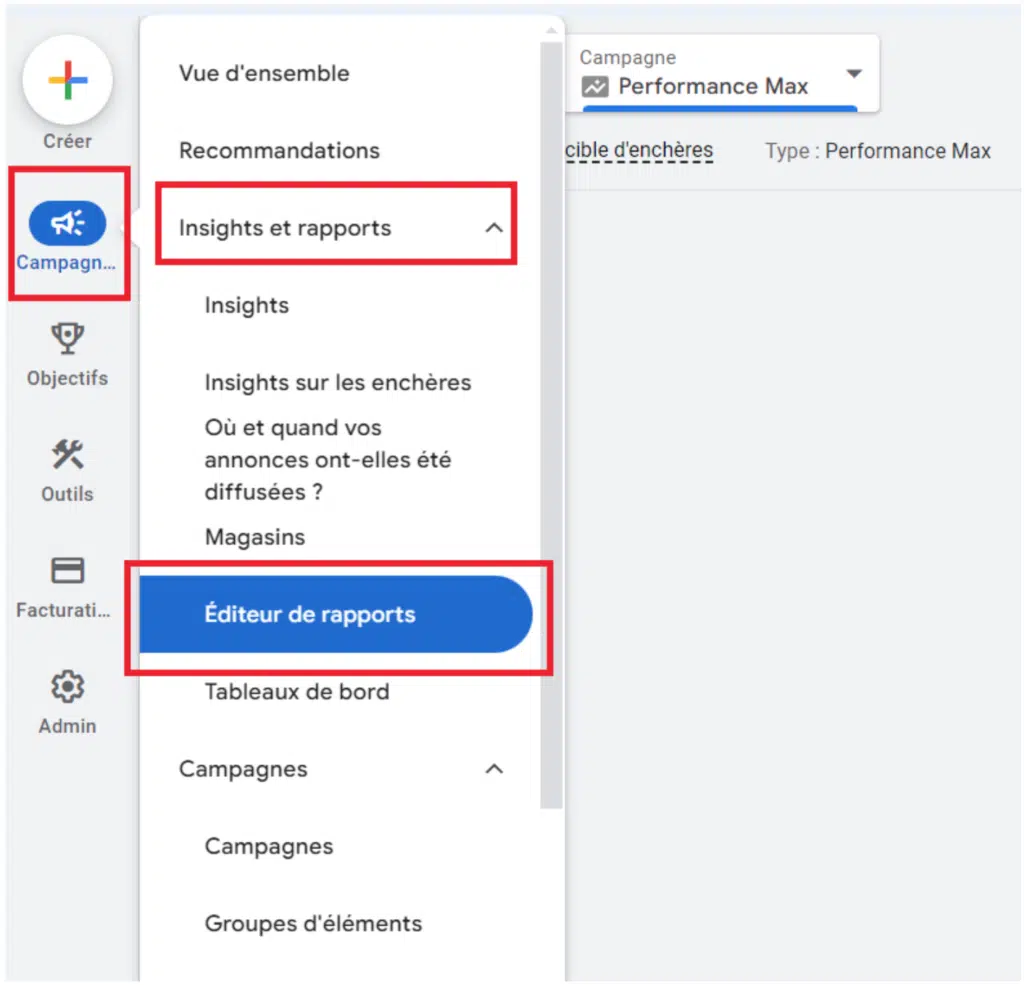
- Log in to your account Google Ads.
- Click on "Campaigns > Insights and reports in the left sidebar.
- Select report editor
- Select "Performance Max campaign locations
Once theLocation of Performance Max campaignsIf you select "Select", you will see the following table:
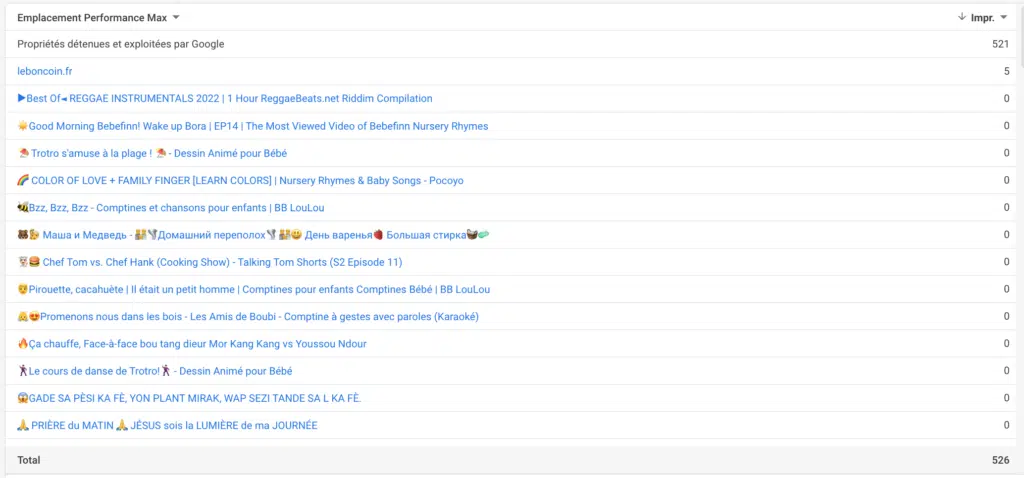
What does the "Properties owned and operated by Google" location represent?
This refers to all the platforms owned by Google, including impressions generated on channels such as YouTube, DiscoverFeeds, Gmail, and other similar properties.
Exclude irrelevant locations : Detailed steps
Google Ads doesn't allow the exclusion of specific locations directly at the PMax campaign level, but you can define exclusions at the account level. Here's how to do it:
Step 1: Create a location exclusion list
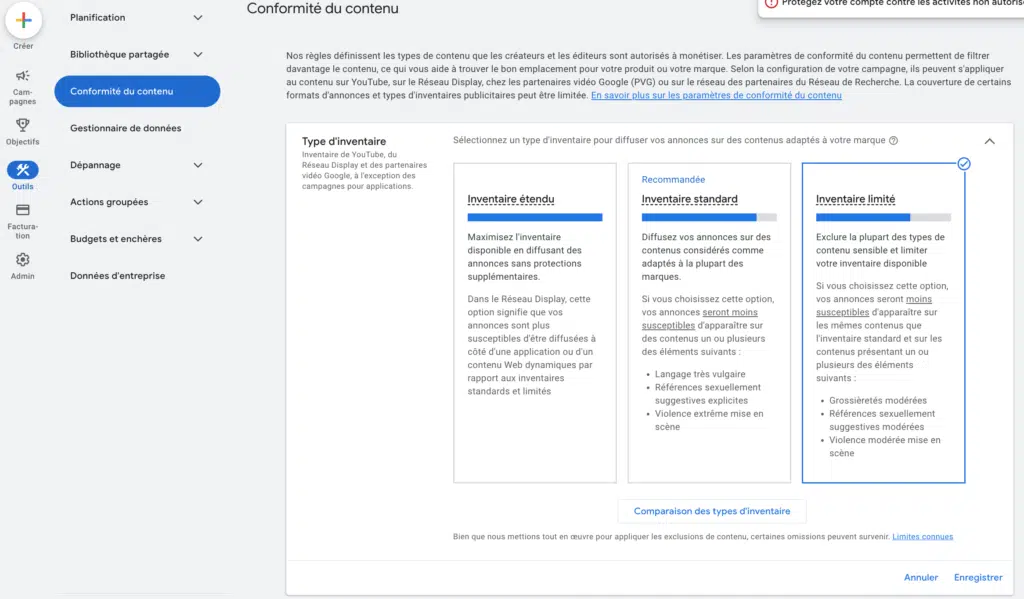
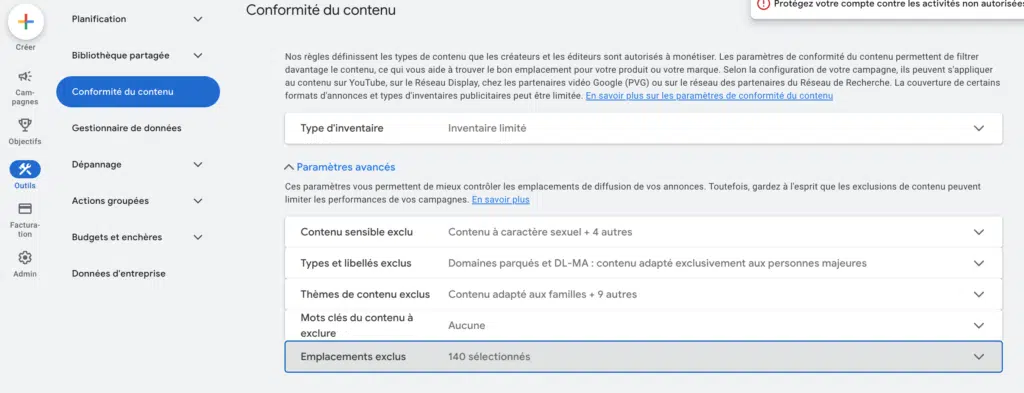
- Access your Google Ads account and click on the icon "Tools (adjustable wrench).
- Under "Advanced settingsselect "Excluded locations.
- Create a new list by adding the sites or applications you wish to exclude.
- Save your list and apply it to your campaigns.
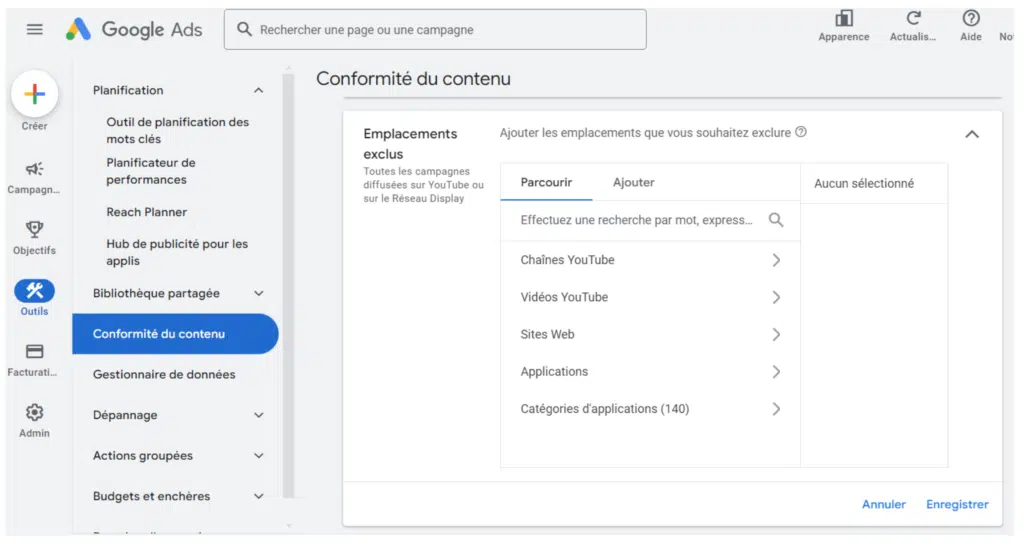
Step 2: Exclude irrelevant mobile applications
To prevent distribution on poor-performing mobile applications, add the following generic URL to your exclusion list: adsenseformobileapps.com.
Broadcast locations to exclude or retain depending on your business sector
B2B sector
- Preferred locations :
- LinkedIn (via Display for remarketing).
- Professional and specialized YouTube channels.
- Business press sites.
- Locations to be excluded :
- Mobile game applications (low relevance for a professional audience).
- Sites or videos aimed at children or teenagers.
Retail sector
- Preferred locations :
- YouTube videos on fashion, beauty or shopping trends.
- Price comparison and cashback applications.
- Locations to be excluded :
- Blogs or videos not related to purchase intent.
- Generic mobile applications if not e-commerce-oriented.
Education sector
- Preferred locations :
- Educational platforms like YouTube EDU.
- Online training sites and applications.
- Locations to be excluded :
- Mobile games and pure entertainment channels.
Tourism sector
- Preferred locations :
- Travel-related YouTube videos.
- Flight and hotel booking applications.
- Locations to be excluded :
- Irrelevant applications (e.g. mobile games, general forums).
Best practices for optimizing your PMax campaigns
1. Leverage audience signals
Use audience signals available in Google Ads to direct the algorithm towards the most relevant users. For example:
- Demographics Age, gender, parental status.
- Interests For example, "travel enthusiasts" for the tourism sector.
- Similar audiences : Based on your existing lists.
2. Regularly analyze and adjust your performance
PMax campaigns require continuous monitoring. Review reports to identify underperforming locations and add them to your exclusion list.
3. Test quality creations
PMax campaigns rely on engaging visual ads. Provide images, videos and descriptions aligned with your audience's expectations.
4. Experiment with bidding strategies
Strategies such as Maximize conversions or Maximize conversion value can produce different results depending on your objectives.
Conclusion: Avoid the pitfalls of irrelevant locations
Performance Max campaigns are a powerful tool for maximizing your results, but they require careful management of delivery locations. By identifying irrelevant locations and judiciously excluding them, you can significantly improve your performance. What's more, by tailoring your strategy to your industry, you can ensure that your ads reach the right people, at the right time.
Need help with your Google Ads campaigns? At Daware.ioWe'll help you optimize your Performance Max campaigns for maximum ROI. Make an appointment with one of our experts today to boost your advertising results!